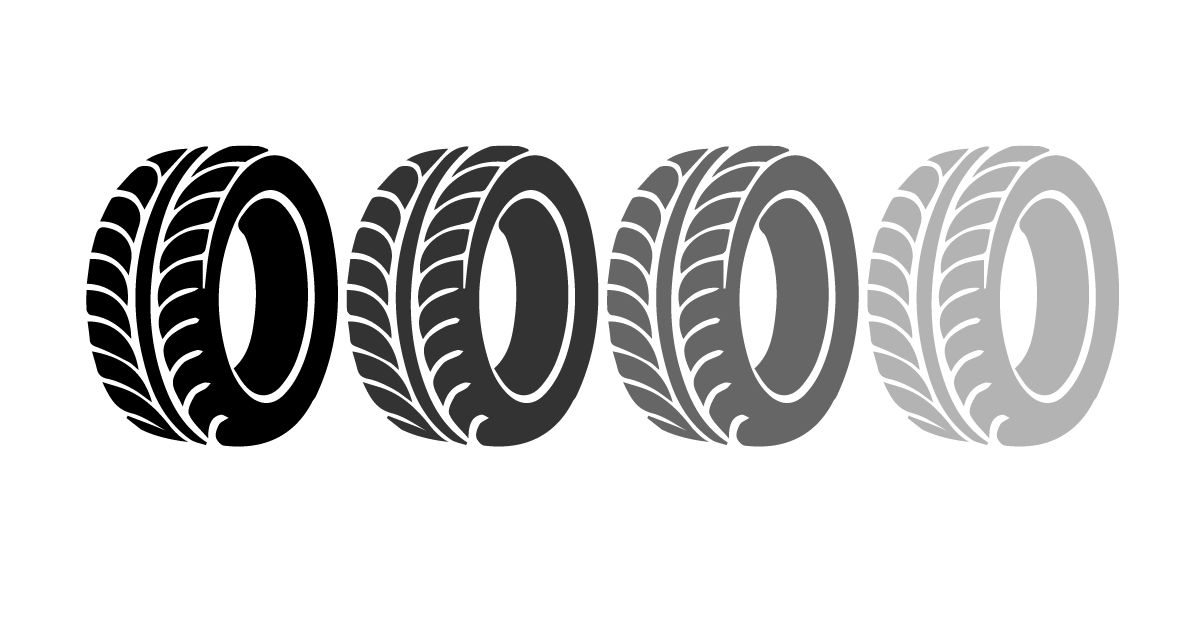
By looking after the condition of your vehicle’s tyres you increase safety and can decrease motoring costs too, it is also a legal requirement to ensure your tyres are safe on the road. We have put together a few tips below to help you keep your tyres in good condition.
Tyre Pressure
Check your tyres have the right pressure every month to ensure you can keep control of your car and help to protect against any irreversible damage or premature wear and tear. Small perforations can cause pressure in your tyres to drop as well as air escaping naturally or from a decrease in temperature.
Remember to check your tyre pressure before a long journey and ideally when they are cold or have not been running for 2 hours. Checking your tyres when they are not cold adds 4 to 5 PSI (0.3 bar) to the recommended pressure so make sure you never deflate a hot tyre.
Over or under inflating your tyres can affect their lifespan, create damage and cause issues with performance. You can even save on fuel costs by making sure the tyres have the recommended pressure applied.
Refer to your cars user manual or a label that may be situated inside the door or fuel flap for the correct tyre pressure. The tyre pressure level you see actually on the tyre itself is the maximum inflation level and not the ideal level.
Tyre Depth and Wear
Replace your tyres before their tread depth is worn down to 1.6mm, check the tyres regularly to make sure you maintain maximum grip and traction. Having a good depth tread level also increases your mobility and safety by helping to disperse water from the underneath of the tyres creating more control when you drive and help prevent aquaplaning. Making sure you have regular maintenance and the right air pressure will keep up your tyres performance.
Balancing
You’ll know a wheel is out of balance when one area is heavier or lighter than the rest. This will cause uneven and rapid tread wear, vibration, more stress on front-end parts and front-end parts to wear prematurely.
If your wheel is not balanced correctly one area will feel lighter or heavier than the others which will cause the tread to wear much faster and unevenly, causing front-end parts to wear out more quickly due to stress.
Rear Tyres
It is more difficult to judge the grip of the rear tyres as the steering wheel is not attached to the rear wheels, to allow for better control and road holding during an emergency brake or taking a tight corner in slippery/wet conditions you should have the least worn or new tyres for the rear wheels.
Wheel Alignment
While you are driving it is quite difficult to tell if the vehicles axles and wheels are aligned in the right position, if they are not aligned correctly the handling of the cars suspension geometry may be altered causing a risk to driving safely. If you notice uneven wearing on the tyres, hit or come into contact with a pothole, kerb or other object, you should get them inspected by a tyre specialist. Having the correct alignment helps road handing, saves fuel and reduces rapid wear to your tyres.
Tyre Valves
Valves can deteriorate over time as they are usually made of rubber as well as their components. You can keep yourself, car and tyres protected and costs down by replacing the valves when you buy new tyres. It can also cause air loss travelling at high speed if centrifugal force makes the rubber valve stem bend. The valve cap helps to keep away dirt and dust particles as it is the primary air seal. You can ensure your tyres have a longer lifespan by checking your valves and caps are in a good enough condition to keep an airtight seal and by making sure you have the right tyre pressure.
Tyre Repairs
It is important to have a tyre specialist inspect the tyre from the inside by removing them from the wheel if you are having them repaired. Internal tyre damage will not be visible inside the tyre if it is still mounted to the wheel. The specialist will have compliant procedures for inflating, balancing, dissembling and assembling the tyres, and valve replacement so they can detect and assess any unseen damage that may be inside the tyre. They will make sure the tyre refit is correctly fitted, optimised for handling, and complies with the vehicle manufacturers legal rules for load capacity rating, structure, speed code, recommended tyre pressure and size.
Service Life
Tyres are made of combined rubber compounds and various other materials that may affect their performance, which means making a prediction on how long the tyres will last very difficult to estimate in advance. Weather, conditions of use and storage will also impact a tyres performance. Regular tyre inspections and maintenance can help to quickly identify any issues that may need them to be repaired or replaced.
As well as regular tyre inspections and maintenance, drivers should have tyres that have been in use for five years or more inspected by a specialist at least annually, follow the vehicle manufacturer’s tyre replacement recommendation and replace tyres still in service ten years or more from the date of manufacture with new tyres, even if they appear serviceable and even if they have not reached the legal wear limit.



